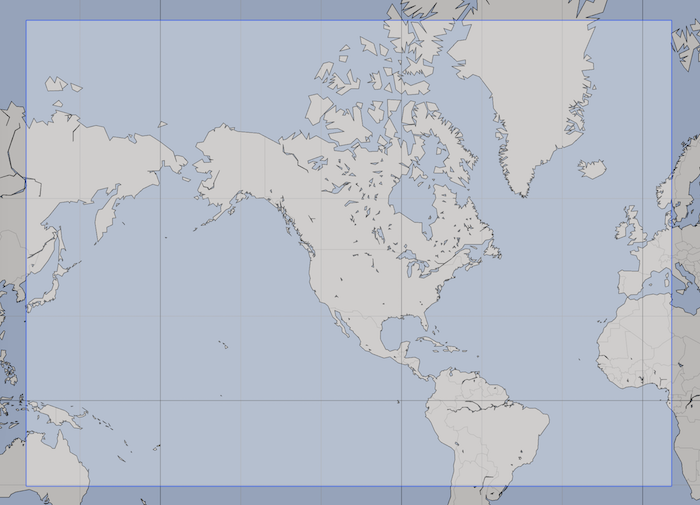Four new models were added to the LuckGrib server cluster in August 2018, the National Blend of Models
The four models are:
At the time these models were introduced the group responsible were in the final stages of testing the next version of the models, version 3.1. The update is now operational and the LuckGrib versions of the model have been updated to incorporate some of the new weather information that has been made available.
The first three of the models (CONUS, Alaska and Hawaii) are quite similar, while Oceanic is different from the others (these differences are described in the original announcement referenced above.)
Updates to the Blending Process
Many new models have been added to the blend.
The list of model inputs, for version 3.0 of NBM, is:
- NAM (North American Mesoscale Forecast System - 12km)
- NAMNest (NAM 3km high resolution nest)
- GFS (Global Forecast System)
- GEFS (Global Ensemble Forecast System)
- GDPS (CMC - Environment Canada Global Deterministic – PoP12/QPF06 only)
- GEPS (CMCE - Environment Canada Global Ensemble)
- EKDMOS (Ensemble Kernel Density Model Output Statistics)
- Gridded GFS MOS (GMOS or MOSGuide)
- HRRR (High Resolution Rapid Refresh), CONUS only
- RAP (Rapid Refresh). (Also RAP Alaska)
- Gridded LAMP (GLMP Localized Aviation MOS Product), CONUS only
- HiResWindow ARW NCEP (High-Resolution Window Forecast System (HIRESW))
- HiResWindow NMMB NCEP (High-Resolution Window Forecast System (HIRESW))
- SREF (Short Range Ensemble Forecast) CONUS, Alaska, Puerto Rico sectors
- NAVGEME (Navy FNMOC Global Ensemble)
The update to NBM, version 3.1, has added the following model inputs:
- ECMWFD (European Centre for Medium-Range Weather Forecasts, deterministic - 0.25 degree)(CONUS, OCONUS) (0000, 1200 UTC runs)
- ECMWFE (European Centre for Medium-Range Weather Forecasts, Ensemble - 1.0 degree)(CONUS, OCONUS) (0000, 1200 UTC runs)
- NAVGEMD (Navy FNMOC Global deterministic - 0.50 degree For most elements, 1.0 degree for significant wave heights)(CONUS, OCONUS, and Oceanic domain) (0000, 0600, 1200, 1800 UTC runs)
- GDPS (CMCD Environment Canada Global deterministic model (25km) for weather elements other than PoP12/QPF06)
- RDPS (Canadian Regional deterministic model - 10km) (CONUS and Alaska) (0000, 0600, 1200, 1800 UTC runs)
- REPS (Canadian Regional ensemble model - 15km) (CONUS) (0000 and 1200 UTC runs) (Precipitation products only)
- HRRR Alaska (High Resolution Rapid Refresh - 3km) (a). 1-18 hours (0300, 0900, 1500, 2100 UTC runs) (b). 1-36 hours (0000, 0600, 1200, 1800 UTC runs)
- HiResWindow ARW Mem2 (3-km High-Resolution Window Forecast System (configured like NSSL WRF) (CONUS and OCONUS)
- WW3 (0.5 degree WaveWatchIII global deterministic model)
- WW3 (0.5 degree WaveWatchIII global ensemble model)
- WW3 (0.16 and 0.06 degree WaveWatchIII high resolution regional models) (CONUS and OCONUS)
- GLW (2.5km Great Lakes Wave model)
The v3.2 update to NBM has added the following model inputs:
- ACCESS-G (The Australian global model)
- GFS-FV3 visibility
- additional improvements for other weather elements (temperature, rain, …)
The v4.0 update to NBM has added the following model inputs:
- GFS-MOS (0000-, 0600-, 1200-, and 1800-UTC cycles)
- Deterministic ECMWF-MOS (0000- and 1200-UTC cycles)
- Ensemble ECMWF-MOS (0000- and 1200-UTC cycles)
- EKDMOS (0600- and 1800-UTC cycles)
- NAM-MOS (0000- and 1200-UTC cycles)
- LAMP (hourly)
In addition to the new models that are available, there are other improvements
as well.
Read the official announcement for more details.
NBM Conus, Alaska, Hawaii
Several new parameters are now available. The CONUS and Alaska models now include:
- rain (new to Alaska model)
- snow
- air temperature at 2m
- relative humidity
The Hawaii model now includes rain
NBM Oceanic
The NBM Oceanic model was previously updated twice a day (at 00Z and 12Z). The model is now updated six times a day, at: 00Z, 05Z, 07Z, 12Z, 17Z and 19Z
Several new parameters are now available in the Oceanic model:
- sea level pressure
- wind gust
- visibility
- combined wind wave and swell height
Also, two parameters which were briefly not available (10% and 25% probability wind speeds) are now available again.
I believe the Oceanic version of the NBM is an interesting model for sailors. The model has a large domain, covering most of the Pacific and Atlantic oceans, down to 30° south at a 10km resolution.

As discussed in the announcement, NBM Oceanic is a weather forecast model which is able to express the degree of certainty it has in its results. This is a crucial difference between this model and all other models.
A short tutorial is available, describing the NBM Oceanic probabilistic data in some more detail.
Conclusion
This is an excellent update to this interesting suite of models. Thanks to the National Weather Service and the Meteorological Development Laboratory!
Feedback is welcome.